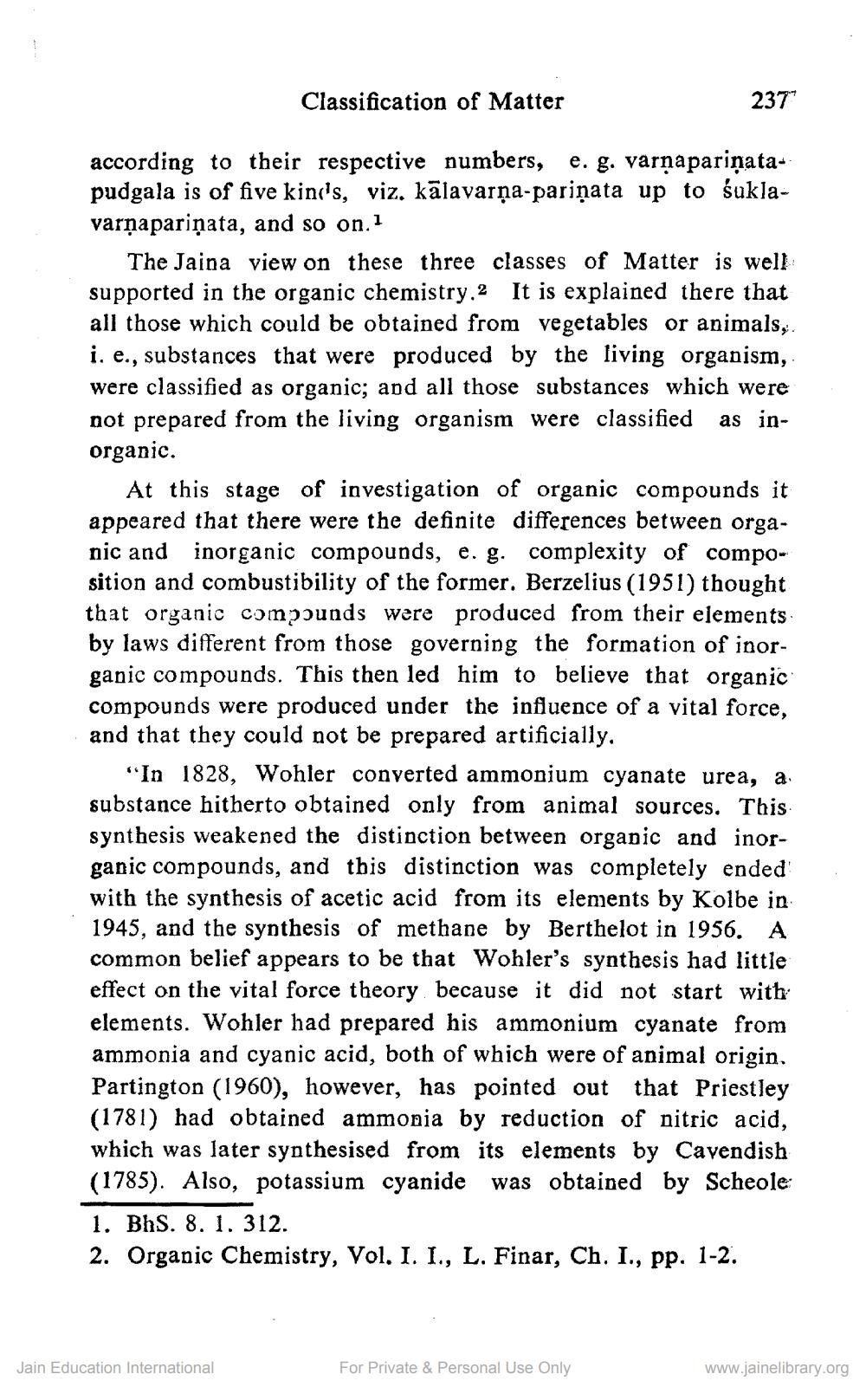________________
Classification of Matter
237
according to their respective numbers, e. g. varṇapariņatapudgala is of five kina's, viz. kālavarņa-pariņata up to śuklavarṇapariņata, and so on.1
The Jaina view on these three classes of Matter is well supported in the organic chemistry. It is explained there that all those which could be obtained from vegetables or animals, i. e., substances that were produced by the living organism, were classified as organic; and all those substances which were not prepared from the living organism were classified as inorganic.
At this stage of investigation of organic compounds it appeared that there were the definite differences between organic and inorganic compounds, e. g. complexity of composition and combustibility of the former. Berzelius (1951) thought that organic compounds were produced from their elements by laws different from those governing the formation of inorganic compounds. This then led him to believe that organic compounds were produced under the influence of a vital force, and that they could not be prepared artificially.
"In 1828, Wohler converted ammonium cyanate urea, a substance hitherto obtained only from animal sources. This synthesis weakened the distinction between organic and inorganic compounds, and this distinction was completely ended with the synthesis of acetic acid from its elements by Kolbe in 1945, and the synthesis of methane by Berthelot in 1956. A common belief appears to be that Wohler's synthesis had little effect on the vital force theory because it did not start with elements. Wohler had prepared his ammonium cyanate from ammonia and cyanic acid, both of which were of animal origin. Partington (1960), however, has pointed out that Priestley (1781) had obtained ammonia by reduction of nitric acid, which was later synthesised from its elements by Cavendish (1785). Also, potassium cyanide was obtained by Scheole 1. BhS. 8. 1. 312. 2. Organic Chemistry, Vol. I. I., L. Finar, Ch. I., pp. 1-2.
Jain Education International
For Private & Personal Use Only
www.jainelibrary.org




